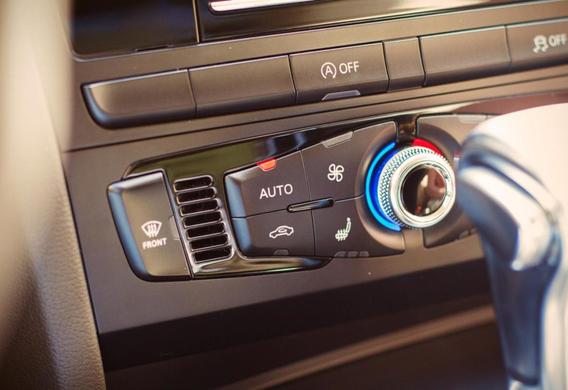
Many drivers will agree that the management of the stove or car conditioner is quite troublical. It is necessary to constantly regulate the power of air supply and its direction. It's too hot, and it needs to be dampable, and now it's cool-and it's necessary to regulate again. This is a problem that has been solved with the advent of climate control. It is enough for the driver to simply set the desired temperature, and the climate installation itself will determine the means to achieve it and how to support it.
Compact climate installations with manual control appeared in 1954 on Nash Amassador cars. This was a revolutionary achievement, preceded by gas lamps, bourgeoikes, and giant air conditioners, which were half of the trunk of a car.
Climatic installations have already been installed with e-governance in 10 years-in 1964. The first climate controls were installed on the expensive cars of the American company Cadillac. In European brands, electronic climate systems appeared much later in 1979.
The European pioneer is the Mercedes, which has equipped similar model W126. However, this climate control was not the German manufacturer's own invention, but was borrowed from the American Chrysler. However, in a couple of years, the Mercedes improved the device, which could now create different air temperatures for the driver and for the front passenger.
We owe it to the Japanese manufacturer to create a separate climate of control for passengers sitting in the rear seats. In 1991, Toyota became equipped with Crown Majesta sedans.
Device
The climate control device includes a climate change facility and a management system. We'll stop at each of them in detail.
The climate installation consists of a heater radiator, an air conditioner and an air conditioner, consisting of a condenser, compressor, condenser, and a resiver.
All of these devices are managed electronically by the electronic system, which includes sensors, an electronic climate control unit and the actuators.

The function of the input sensors is the measurement of the various parameters and the conversion of data into electrical signals. The list of climate sensors is as follows:
Outside air temperature sensor.
Solar radiation sensor (photodiode).
The output temperature sensors. The number depends on the modification of the clem-control. There will be two zoned, and three-zoned, respectively. They are located inside the passenger compartment and are forcibly ventilated. This is necessary in order for them to determine the temperature within the car as much as possible, as the entire system depends on it.
The Pothenometers of the lowers-determine the current position of the airlock.
The temperature sensor of the evaporator and the pressure sensor in the air conditioning system shall be monitored for the operation of the air conditioner.
The readings from all these sensors go to the electronic unit that processes them. The block, carrying out a given task, sends corresponding signals to the executive devices.
The actuators include the actuators of the enclosure and the electric motor of the airflow fan, through which the specified temperature regime is created and maintained. The shale may have a mechanical or an electrical power train. The following flaps may be used in the construction of a climate installation:
the airflow control;
central plank;
Temperature control (systems with two or more control zones);
The recycling process;
the flap of the glass.
How it works
The control system is able to automatically maintain the air temperature in the passenger compartment between 16 and 30 °C. The required temperature shall be set with the instrument on the instrument panel. The controller sends a signal to the electronic unit that activates the appropriate program. Then the control unit polls all the sensors on the system, and, based on the data received, gives certain commands to the executive devices.
The air enters the passenger compartment of the heating machine radiator, where it is heated, thanks to the coolant. The air temperature is regulated by the central control, which helps to mix cold and hot air.
If necessary, the air conditioning is included. It removes excess heat and moisture from the passenger compartment.
Varieties
Conventional climate control sets the temperature in the entire compartment. However, there are variations of climatic conditions that allow for the creation of a climate for each individual. Two-zoned driver and passenger seated in front. And three and four zoned passengers, respectively, seated in the rear seats.









